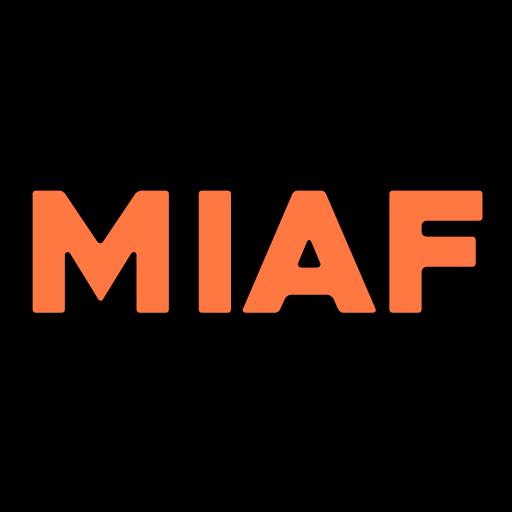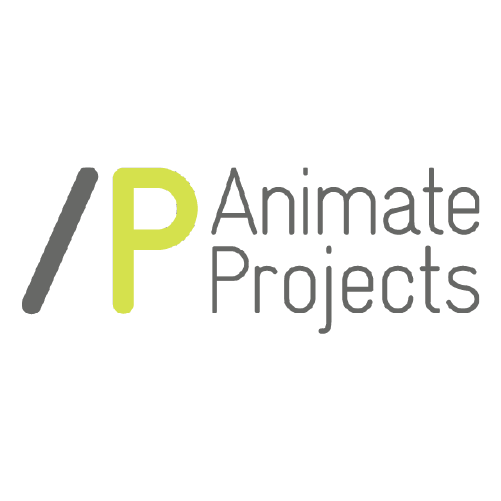
Don’t Shoot Me, I’m Only The Piano Player.
Great album really. A good while prior, Reggie Dwight had been down to the Births, Deaths & Marriages office to hand in the paperwork for his name change to Elton John. ‘Don’t Shoot Me, I’m Only the Piano Player’ was the initial jet-boost to a career that had been gradually coming together for a little while but was about to go stratospheric. There is not a lot of oxygen up at some of those heights and some moments of that stellar career suggested occasional incidents of superstar hypoxia. Elton himself claims that back in the day when he was still doing weddings and barmitzvahs he’d been hired to play at Groucho Marx’s birthday party and in a moment of hi-levity Groucho pointed his thumb and forefinger at Elton ‘toy-gun’ style. ‘Don’t shoot me, I’m only the piano player’ was Elton’s mock plea to play along with the gag. It was a different age. Of course, Oscar Wilde also wrote about seeing a sign in a US bar that read “Don’t shoot the piano player, he’s doing his best”. In one of the first concerts I ever went to I saw Elton collapse on stage immediately after performing ‘Better Off Dead’ – most of us assumed it was part of the act. (It wasn’t). Anyway, the broader point is this emergence of Elton John was not just the rise of a great performer, it was a public display of a grown man giving birth to the next version of himself.
Looking past the physical, going beyond the physiological, what is it to be human? How is one of these human units best described, let alone created?
“There are many reasons for dropping in on the Bailiwick of Guernsey, the self-governing island off the coast of Normandy,” suggests David Bellos and Alexendre Montagu in their recent book ‘Who Owns This Sentence? A History of Copyrights and Wrongs’”’. They suggest that one reason for landing your own Gulfstream private jet at the island’s St Martin’s airport is “to call on a local lawyer to register your personality.”
Ummmm…..
“Guernsey’s Image Rights Ordinance came into force in 2012, offering a new and comprehensive form of intellectual property right in a personality and its associated images,” explain Bellos and Montagu. “The law distinguishes between a ‘personnage’ which is the physical person or character behind a personality, and the ‘personality’, which is the subject of the registration. This goes way beyond the face and name of a person and attempts to lock in characteristics and personality traits that a person wishes to protect and – presumably – monetise. These traits can be real or contrived but have to be recognisable as being entwined with their personality – their ‘humanness’ if you like. For the sake of ramping down legal exposure, if I said name an angry cartoon duck most people are going to come up with one of two answers (Donald or Daffy, right?). This could get murky fast….. there is more than one person in this world that thinks they are ‘funny’ (you probably know a few yourself). Let’s leave it to the lawyers to tap dance around “mirror, mirror on the wall, who is the funniest of them all?” The bigger point is that this form of copyright attempts to define what is essentially, inherently human about the person seeking protection. To be honest,if you made it to Guernsey you’re better off spending your time visiting Hauteville House, the surreally opulent digs in which Victor Hugo banged out most of his classics, including Les Mis. Victor – he was funny!!

The face is not the defining substantiation of humanness – of ‘being human’. It is its wallpaper, its promo poster, the first thing you find after clicking on the link. A name even less so. A name is a human’s number plate, more or less. And they are surprisingly inflexible and unmalleable compared to the things that actually make us human….. messy misinterpretable emotions, choices and ideas. There are lots of theories about where that stuff comes from. Salvador Dali’s theory of ‘paranoia-criticism’, just to drag one example in from the cold, explains how two external realities are imposed on a personality to bring out a third.

“Dali defined it as a spontaneous method of ‘irrational knowledge’ based on the critical and systematic objectification of delirious associations and interpretations,” explains Mark Polizzotti in his pocket-rocket of a book ‘Why Surrealism Matters. Think….. “Nobody loves me, everybody hates me, I’m going to the garden to eat worms.”
It makes sense when you think about it – or not… depending on what you believe, how you bring conceptual threads together to build explanations of your own; what kind of human you are (and your face and name will have nothing whatever to do with where you land).

All of these moving parts of our intrinsic humanness have not one iota of physicality to them. In ‘Paradoxes Of Art: A Phenomenological Investigation’ Alan Paskow sends out a search party to try and track them down, tag them and bring them in for further examination.
Paskow suggests that it is “our ‘ability-to-be’, our potentiality-for-being (Seinkonnen) that calls us ‘to be’, to develop ourselves with respect to our best, deepest, ‘most-own’ capacities. Our Seinkonnen constantly makes a claim on us to ‘do better’, to realise original, novel choices consistent with its calling, a lure of unspecified, perfect – never fully achievable – possibility.”

And I thought I pushed the limits of grammar! (or ?).
Without looking left nor right here, I’m going to step into traffic and verbal him. He could be describing the human impulses of an artist.

If it’s true that you can’t be what you can’t see, then the basement bottom prerequisite characteristic required to become an artist is not a functional harnessing of brush, sculptor’s chisel or the licence key code for Toon Boom but a capacity to understand what being human is.
That is the common ingredient that enlivens, informs and defines all the films in this programme.

There is something beguiling about the ultra-physicality that certain types of athletes achieve. It is, in and of itself, a form of vapourish beauty which settles veil-like on its exponent, changing the very way light reflects off them and towards us. Anna Tőkés’ film The Last Drop captures this a hundred times over with the most elegant of gestures and understated glances of its characters. Any live action director would be thrilled to pull these nuanced offerings out of their actors but an animator has to create and capture them one frame at a time. It’s a beautifully crafted case study in the infinite complexity of the simplest of human expressions.

Frequent flyers to these pages will recall numerous attempts to convince readers that the closest cousin animation has as an artform is poetry. Miserable Miracle by Ryo Orikasa sees this programme well and truly past its take-off phase heading for cruising altitude and with you all buckled in there’s no place to hide so here’s another crack at driving home the animation/poetry link theory. Orikasa’s film is a co-production between two of the most important wellsprings of auteur animation – the National Film Board of Canada, powerhouse of the artform since the 1940s, and Miyu, fast emerging as one of the largest producers of stunning, contemporary independent animation. Miserable Miracle took out the top prize at the Ottawa International Animation Festival last year and is a perfect showcase for how the very DNA of a poem – its highly individualised, idiosyncratic structure – is the perfect creative fuel for an animated film. The film brings an interpretative, undulating spirit to visualising the poetry of Belgian/French poet Henri Michaux whose experiments with various word forms matched those with mind-bending chemicals through the first half of the 20th century. This is way less about a literal visualisation of Michaux’s actual words (although it often is that) but more about crafting and presenting an alternative or complementary version of the ideas that bind the poem together….. it’s six-dimensional chess but with the top 2 or 3 layers stripped off and discarded.

There can’t be many more elementally human quests than trying to figure out where we came from…. what got this tumbling ball of gas cooking. Theories abound and some of them read a bit truer than others. It hand-holds the quest to figure out what the plan is when we burn this place to stumps. Expensive as it may be, it appears that buying tickets on a spaceship outta here represents a bit of an early bird deal if you can come up with the readies in advance. All Futures by Argentinian animator Barbara Cerro takes some enchantingly spectacular stabs at how things got rolling in the planet her film is situated in. Perhaps its real leading edge is the seamless way it moves our needle through the process of the formation of organic creation and circulation through to the metaphysical reality of constructed, mechanised distribution networks that signify a disconnected force that is overwhelming and re-making its environment … even as that environment shows signs of cracking under the stresses. Coming to a planet near you, contact Elon for priority seating.

Equally as human is the inevitably of changes wrought by the onset of passing years and the decline that often accompanies that passage of time. This is a physical and emotional low-speed drama that plays out for many people and brings with it feelings of sadness and powerlessness. Money, technology and even luck can stem the tide a little but there is an inevitability about it that can’t be denied….. and humans are the only ones that understand this stuff. It is truly one of the things that makes us human and separates us from all the other creatures we eat, run away from, run over, step on or tie up. Maria Trigo Teixeira’s new film It Shouldn’t Rain Tomorrow captures this beautifully, poignantly and simply. Among many things that make this film so special is that it sits as a tonic to much of the rapid-fire, relentlessly morphing storytelling employed in so many films. Pulling the pacing back to the lived reality of its subject draws us quietly, subtly but more fully into the world of the lead character and gives us a much better opportunity to ‘feel’ her world in the way she is feeling it. The ‘ghosting’ of much of the artwork invokes the style of animators such as William Kentridge and Caroline Leaf whilst giving us a gentle window through which to better immerse ourselves into the spiritual core of the message the film strives – quietly – to deliver. And how many opportunities do we get to do that these days?? The answer….. probably more than we think, we just don’t take the time.
Malcolm Turner
International Competition 4: Being Human screens at The Garden Cinema Sun 24 Nov and online from the same date (available for 48 hours)

















Leave a Reply